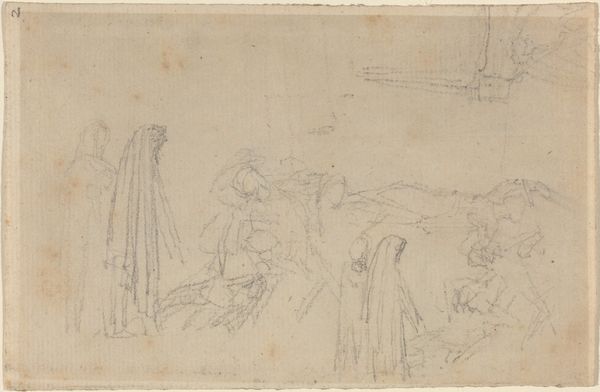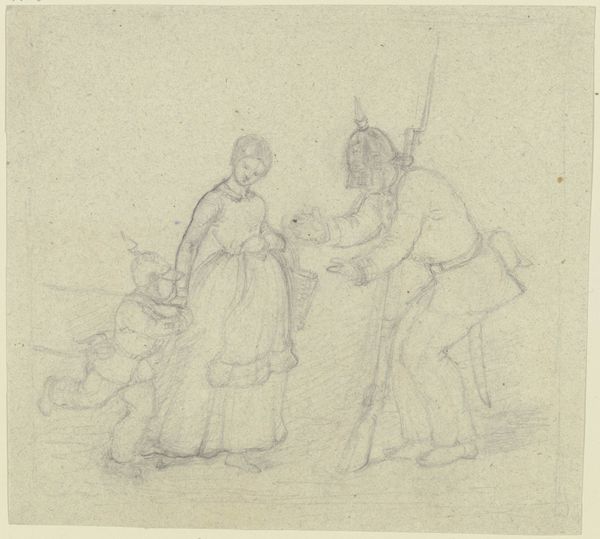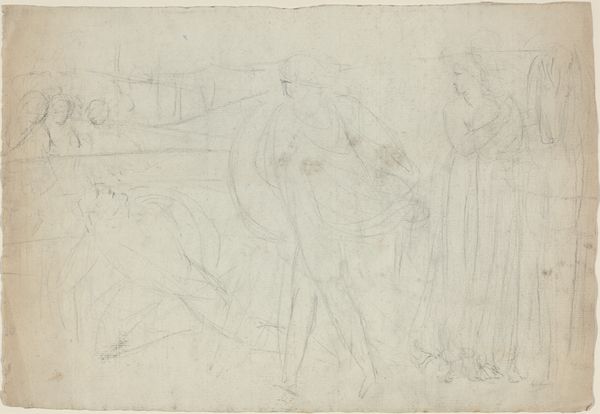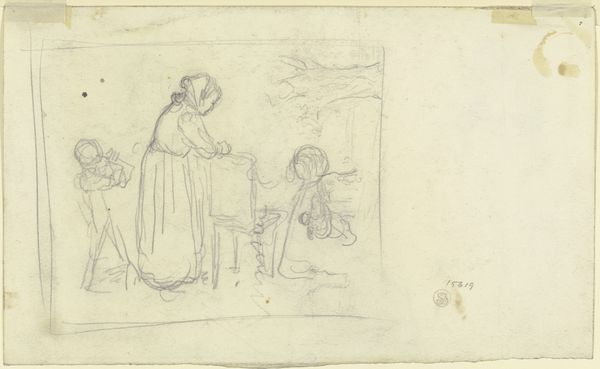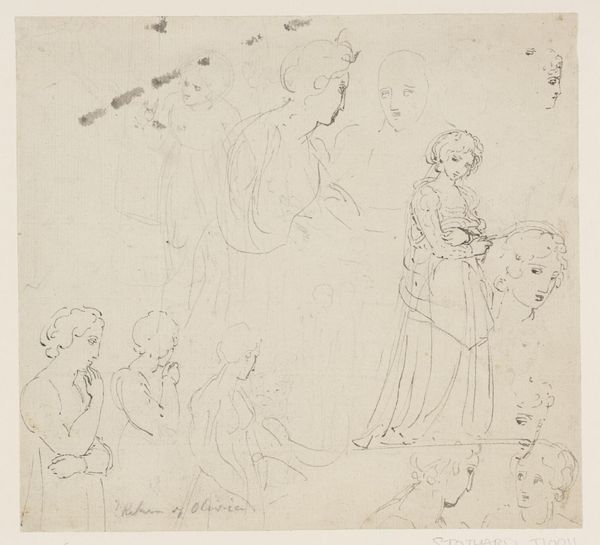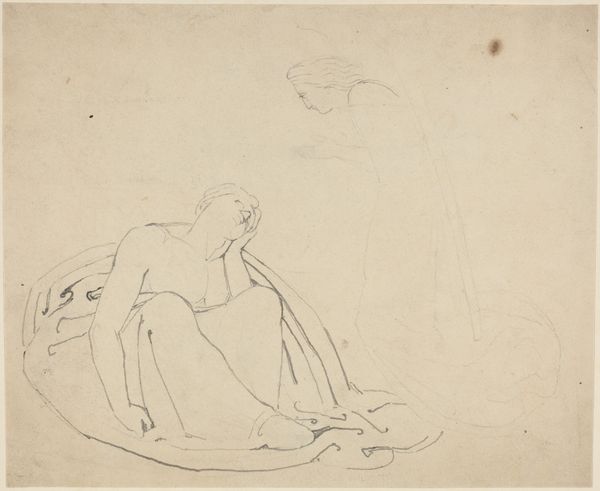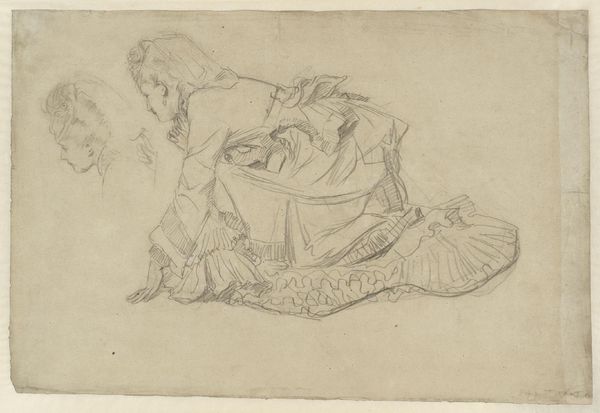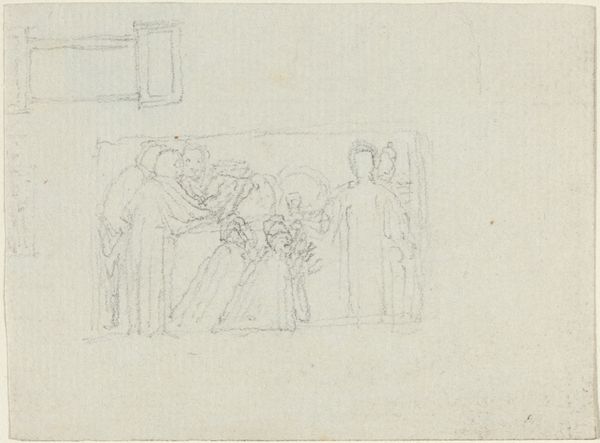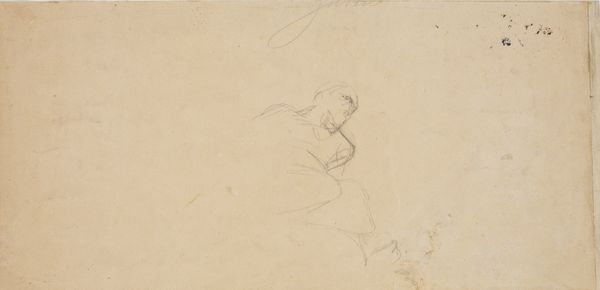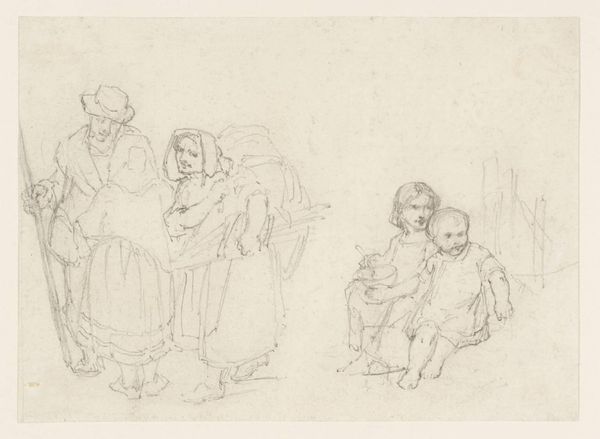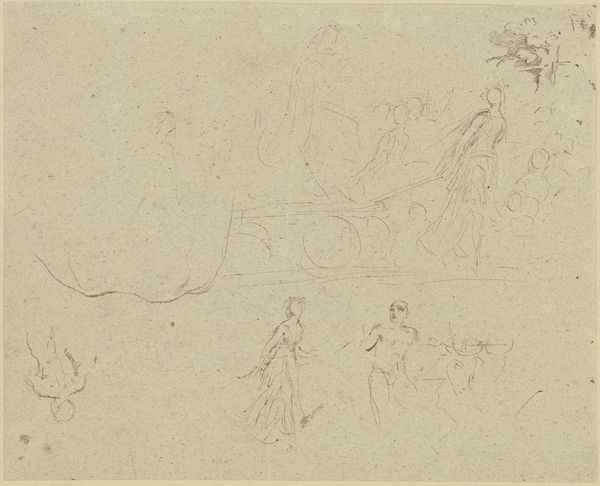![Sheet of Studies [recto and verso] by John Flaxman](/_next/image?url=https%3A%2F%2Fd2w8kbdekdi1gv.cloudfront.net%2FeyJidWNrZXQiOiAiYXJ0ZXJhLWltYWdlcy1idWNrZXQiLCAia2V5IjogImFydHdvcmtzLzEzMzQ3NTVlLWZiNzQtNDI3NC1iYzFlLTMyZmEzN2MzOWM3NC8xMzM0NzU1ZS1mYjc0LTQyNzQtYmMxZS0zMmZhMzdjMzljNzRfZnVsbC5qcGciLCAiZWRpdHMiOiB7InJlc2l6ZSI6IHsid2lkdGgiOiAxOTIwLCAiaGVpZ2h0IjogMTkyMCwgImZpdCI6ICJpbnNpZGUifX19&w=3840&q=75)
drawing, pencil
#
drawing
#
neoclacissism
#
pencil sketch
#
landscape
#
figuration
#
pencil
Dimensions: overall: 9.5 x 13.5 cm (3 3/4 x 5 5/16 in.)
Copyright: National Gallery of Art: CC0 1.0
Editor: This is "Sheet of Studies," a pencil drawing by John Flaxman, although it doesn't seem to have a definite date. There's something melancholic about the loose figures, like a snapshot of a classical tragedy. What's your read on it? Curator: Flaxman's neoclassicism wasn't simply a revival of ancient forms; it was often a critical engagement. Given the social upheaval of his time—the rise and fall of empires, revolutionary fervor—how do you see this scene reflecting anxieties around power, perhaps even anxieties regarding masculine control over the feminine form? Editor: Well, the woman in the center is clearly the focal point. Her limp posture could suggest vulnerability, but the surrounding figures don’t exactly seem overtly threatening, do they? They could be grieving or even protecting her? Curator: Precisely. Consider the context of the late 18th century: Enlightenment ideals were clashing with entrenched social hierarchies. Flaxman, while working within Neoclassical conventions, was he subtly questioning them? The way the woman is central, yet seemingly powerless, reminds us of art's longstanding role in depicting gendered power dynamics, even during periods claiming reason and equality. Does the unfinished nature of the drawing itself speak to some unresolved conflict? Editor: That's an interesting thought. Perhaps the ambiguity is intentional, reflecting the messy realities of power structures at the time. So, it is more than just an aesthetically pleasing drawing then. Curator: Definitely. Flaxman invites us to dissect these historical power structures while reflecting on those still active today. The act of depicting and interpreting a scene like this has long-lasting cultural implications. Editor: That's given me a completely new perspective. I saw it as a classical scene of mourning, but now I understand it's also a subtle social commentary. Thank you. Curator: My pleasure. It’s important to recognize these visual commentaries throughout art history to reveal the underlying social assumptions embedded in these visual materials.
Comments
No comments
Be the first to comment and join the conversation on the ultimate creative platform.
